SUN POWERED YACHTS SPONSORS THE OCEAN POSSE
☀️ SUN POWERED YACHTS ☀️
⛵SPONSORS THE OCEAN POSSE⛵
|
We are exited and pleased to sponsor the Panama Posse with a special 10% discount off SunPower solar panel bundles. Just use promocode PANAMAPOSSE at checkout www.sunpoweredyachts.com/shop and start enjoying clean & quiet solar aboard your boat.
We also offer free consultations so please email or call and let us help you go solar today. PRODUCTS
|
|
|
|
|
Sun Powered Yachts
T: +1 808 825 2670
Lyall is from the UK and has travelled to 50 countries backpacking and sailing. With a background in Hospitality and Event Management he found sailing in 2004 has logged over 55,000 miles and qualified as an RYA Yachtmaster Ocean.
Katie is from Maine and has been working in the solar industry in Hawaii for over a decade, most recently for Sunspear Energy. Her knowledge of solar products and system design will be an asset to your yacht’s system. |
|
|
Based on our time and experience sailing, on short trips and living at sea, we have created a Power Usage Chart below. You can see more details on what each system could power on your weekend or live aboard sailing adventure. Create your own power usage table and see what your power needs are aboard your own yacht then choose the number of solar panels accordingly |
|
|
|
|
|
SV REMEDY DOUBLES BACK OVERLAND TO NICARAGUA
SV REMEDY DOUBLES BACK OVERLAND TO NICARAGUA
WARNING: Do not read while hungry or thirsty (for Rum or Adventure)

Karl and Natalie Leibensperger, from SV REMEDY, are currently exploring Nicaragua overland from Costa Rica and shares some details and highlights of their experiences along the way:
Due to time constraints we were not able to visit the Port of Puesta Del Sol in Northern Nicaragua but instead headed directly to Costa Rica. While staying in Marina Papagayo we planned a 10 day trip to Nicaragua with Va Pues Travel. The company organizes custom private tours of Nicaragua. Our trip started with a transfer from Liberia to Peñas Blancas. There are several transfer companies and the prices range from $85 to $120 each way. We used Best Ride Costa Rica, +506 8629 0242 with a rate of $85 each way. The transfer takes about 90 minutes. It is a pretty interesting drive north to the border. The craziest thing is that there is 9km of backed up semi trucks that wait days to get into Nicaragua. We drove most of the 9km on the wrong side of the road swerving in and out of traffic. It made for an eventful ride.
Once at the border the Costa Rican immigration office is within a few steps of where your transfer is able to drive. Our English speaking border agent took our passports, instructed us to pay our exit taxes at a bank machine ($8 US PP) and then once paid he stamped our passports and sent us on our way towards Nicaragua. There is a marked walkway to the border and the entire walk is about 300 meters. Before getting to the Nicaraguan immigration office you must show your passport to an official at a check point. They are looking for your exit stamp from Costa Rica. The Nicaragua immigration office is a huge blue and white building, really impossible to miss. You will need $1 US PP cash to get in the door. Once inside, the immigration official will need your passport, your hotel name, and your profession. The cost is $13 US PP in cash. They will give you two official papers that are needed to exit the country. Once this is completed all luggage is placed through an X-ray machine and then you are on your way. Welcome to Nicaragua!
We had a tour guide waiting for us but there is an Enterprise Car Rental at the Nicaraguan border. I'll add that there is also one on the Costa Rican Border also. Our first stop was Rivas, here we caught a very crowded transport ferry to Ometepe Island.
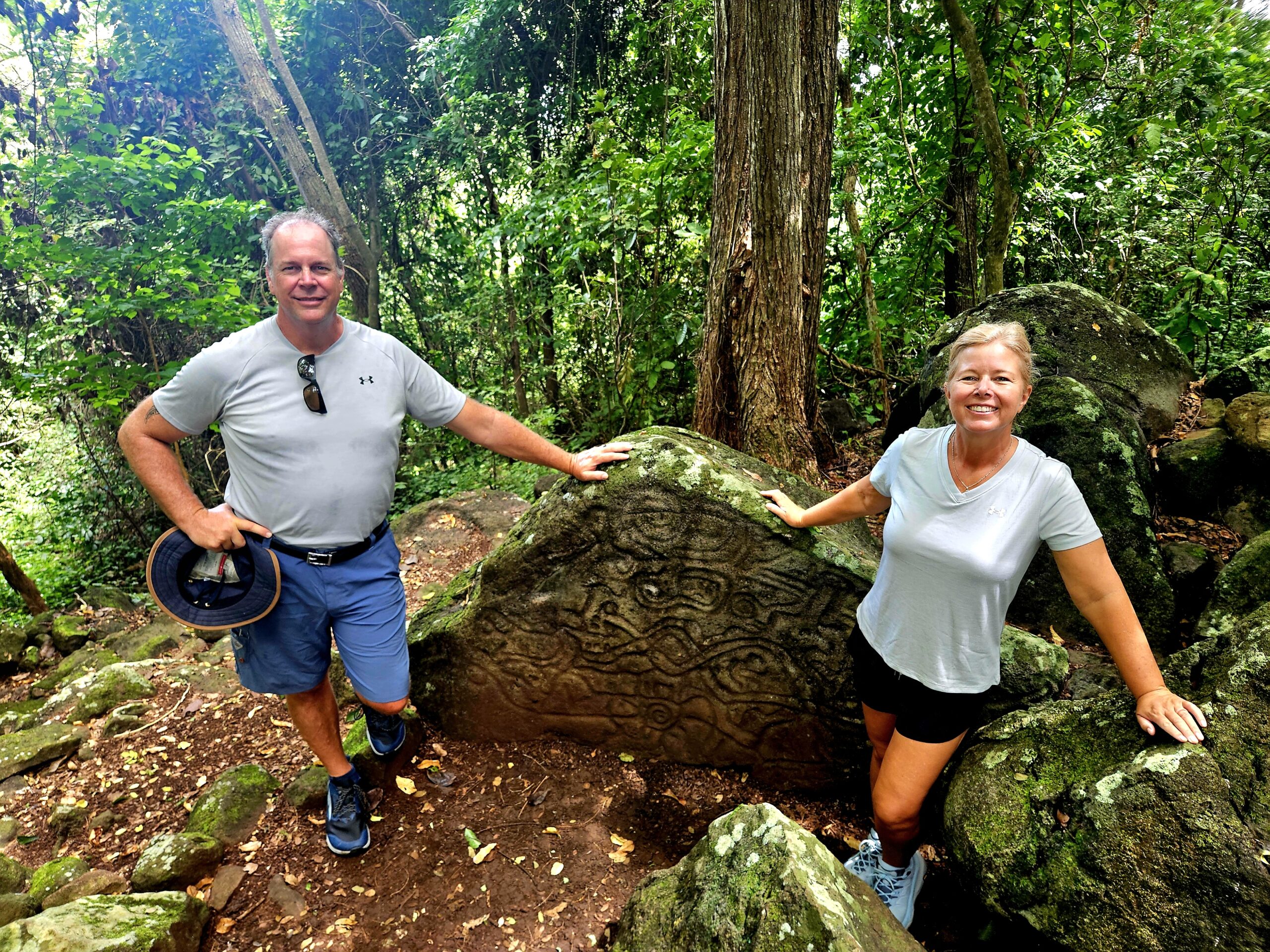

After the return ferry ride back to Rivas we moved on to the Capital City of Granada. We stayed at the Hotel Plaza Colon, which is a beautifully refurbished colonial house overlooking Granada's Central Park. Bring your bathing suit to cool off in their wonderful center court pool.
On the drive to Granada we stopped in Catarina for a ceramic pottery factory tour. The indigenous population has handed down this artwork to the current generation and it is their main livelihood in this area. The pottery in some of the shops is very detailed and exquisite. We did buy several pieces for our home in Florida.

distance is Lake Nicaragua. The picture was taken from the city of
Catarina, which is famous for their handmade pottery. The pottery is
absolutely beautiful. We purchased quite a few pieces that will be
shipped to the US.

Granada is a Colonial City with a rich history. If you visit Granada I highly recommend having a city tour, as without a guide I would not have learned as much of her History. Since it was so hot we cheated on our walk and hired a horse and carriage for $20. I told Karl it was the best $20 I've spent in a long time. An interesting stop was at a tile factory that has been in business since 1905. They make all of the colorful tile around the city, both in buildings and on the sidewalks. They were kind enough to show us their tile making process during our impromptu stop.


Two suggestions.


After two nights in Granada our trip led us to Estili. It is the location of most of the cigar factories in Nicaragua. Karl's goal was to visit the Padron Cigar Factory but to his disappointment they are extremely private and do not have tours. In fact, they do not sell their cigars in Nicaragua. They are all exported. (So, we found a) cigar factory tour in Estili and (found) some good quality cigars to bring back with us.
(We had) an amazing tour of AJ Fernandez Cigar Factory. Mario was our English speaking guide. After working for AJ Fernandez for 7 years, he has learned and is able to explain the cigar process in detail. His background is that he has an Agriculture Degree, so he can answer specific questions about the process that I don't think you would get in other locations. It takes about 5 years and 300 hands to produce one cigar. The facility is enormous and the process is just as complicated as making wine or whiskey. He used those analogies throughout the tour. I was not aware of the detail that goes into each batch of cigars. The tour lasted about an hour and I would rate this as one of our top factory tours. Technically, purchasing cigars is not possible, but in Nicaragua everything is possible. Estili is a bit out of the tourist zone but completely worth the stop.



This is just one of the rooms that processes the tobacco. This is sorting room for the tobacco that becomes the wrapper.
As of this publication, Karl and Natalie are continuing north to Leon, Nicaragua. Karl and Natalie finish by sharing:
As Posse members we are making our way to Flor de Caña hoping to purchase some well aged rum. (Excellent idea!!)
Southern and middle Nicaragua have been beautiful and I am thankful we are able to spend 10 days touring this wonderful country.
 Karl & Natalie Leibensperger - 2019 Leopard 45
Karl & Natalie Leibensperger - 2019 Leopard 45

THANK YOU SV REMEDY FOR SHARING YOUR ADVENTURE ALONG THE WAY!
Ocean Posse Members, please share your stories by sending them to editor@oceanposse.com.
Maurisa, the editor, is always happy to receive your stories and share them out. Together we can inspire one another!
MUST SEE: Tairo Atoll – French Polynesia
MUST SEE: Tairo Atoll – French Polynesia –
Tairo Atoll – French Polynesia –
one of THE SEVEN TUAMOTUS IN THIS UNESCO Biosphere Reserve

The Tairo Atoll is part of the UNESCO Tuamotus Biosphere Reserve and was the last of the Tuamotus to be recorded and charted by European explorers. The Biosphere Reserve was established in 1977 and consists of 7 low islands of coral or atoll origin: Aratika, Fakarava, Kauehi, Niau, Raraka, Taiaro, and Toau. These atolls are very different from each other in size, shape, openness to the ocean, population and activities. Its character is unique: there are small closed lagoons such as those of Taiaro and Niau, the former being over-salted while the latter is brackish. And large lagoons open to the ocean such as Fakarava, which has the largest pass in French Polynesia 1,600 metres wide.
The Tairo Atoll is particularly fascinating as it is completely closed off to the ocean. While there may not be any permanent human residents there are many plants, mollusks, and fish. In 2022, a team of adventurous scientists from all over the world led by the Okinawa Institute of Science and Technology ventured to Taiaro to investigate this unique atoll. The interior lagoon is warmer and saltier than the surrounding ocean making it an interesting laboratory for interdisciplinary scientists studying a broad range of subjects form endemic species, to evolution, to adaptation, to climate change and more. For an accessible explanation of this mission, check out the description and video in this article:
https://www.oist.jp/news-center/news/2023/3/10/tiny-atoll-pacific-ocean-offers-glimpse-warmer-world
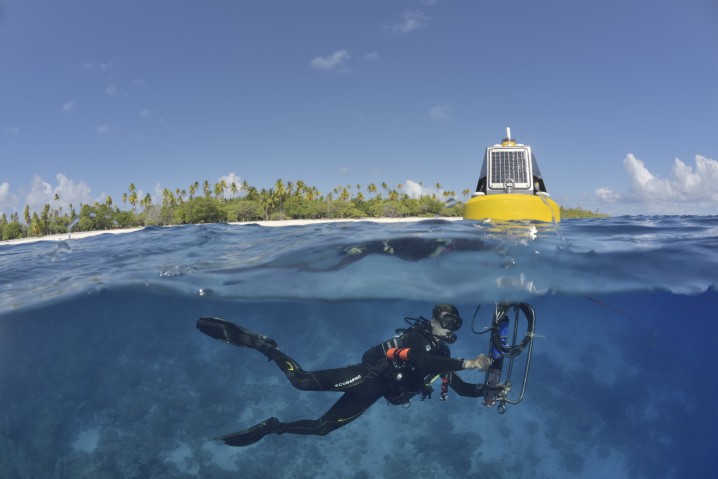
According to UNESCO, "Biosphere reserves are ‘learning places for sustainable development’. They are sites for testing interdisciplinary approaches to understanding and managing changes and interactions between social and ecological systems, including conflict prevention and management of biodiversity. They are places that provide local solutions to global challenges. Biosphere reserves include terrestrial, marine and coastal ecosystems. Each site promotes solutions reconciling the conservation of biodiversity with its sustainable use. Tairo is one atoll of 7 in the Biosphere Reserve of the Toamotus. It's inclusion is a testament to the unique and phenomenal ecology of the Atoll. Scientists have found a wide range of species inside an atoll that has only seasonal exchange with the outer ocean and hope that the microcosm of Taiaro may present some insight into adaptations to climate change yet to come.

Atolls are evidence of geologic change and great mystery. Once upon a time volcanic islands erupted out of the ocean. Slowly, coral began to encircle and surround the islands. In the Tuamotus the volcanos sunk, collapsed, and/or eroded away into the ocean leaving a ring of coral surrounding lagoons. The Taiaro atoll is a ring-shaped island built up on an ancient volcano that has sunk into the ocean due to the drift of the Pacific Ocean floor. Taiaro is only visible because of the rim of coral that forms a barrier reef 5 km in diameter around the original volcano. The inside of the atoll has a sandy bottom punctuated with coral heads or 'bommies' that host marine flora and fauna. The landmass of the atoll itself is home to endemic birds mollusks, coconut palms and other plants. The biodiversity is impressive.
Nearby, the Tahanea atoll offers a very different experience from Taiaro in that one can enter the atoll and experience the inside and the outside. Perhaps Tahanea offers a glimpse of what Taiaro may be like.


MUST SEE: CIUDAD PERDIDA (LOST CITY) COLUMBIA 🇨🇴
MUST SEE: CIUDAD PERDIDA
(LOST CITY) COLUMBIA 🇨🇴

Ciudad Perdida consists of a series of 169 terraces carved into the mountainside, a net of tiled roads and several small circular plazas.

Hidden deep in the jungle of the Sierra Nevada de Santa Marta mountains in northern Colombia sits an archeological site called Ciudad Perdida, the “Lost City”. Built by the Tairona people in 800AD predating Machu Pichu by over 600 years. The Ciudad Perdida archaeological site only became an attraction after it was uncovered in the 1970s.
Los Sepúlveda was a small family of looters in Colombia; their story leads to the beginning of one of the greatest archaeological discoveries in modern times. The family went hunting in the forests of Colombia when they shot down a wild turkey. Upon retrieving the turkey, they noticed it had fallen on a piece of an exposed staircase. This staircase would lead them to find La Ciudad Perdida. For years after its discovery by the looters, “Treasures from the site, including gold figures and ceramics, soon began to appear on the black market” Archeologists were alerted to these black market treasures and managed to, with the help of indigenous people who protect their ancestral site, trace themselves to the area in 1976. The area was researched and reconstructed over the next 6 years.
Although La Ciudad Perdida is one of the most impressive sites, it’s not alone, only about 30-40% of the sites in the Sierra Nevada region have actually been explored. Thanks to recent widespread access, more and more of these sites are being discovered, and the search for new lost cities has just begun.

Ciudad Perdida was probably the region’s political and manufacturing center on the Buritaca River and may have housed 2,000–8,000 people.
Named Teyuna by the Tairona but dubbed Ciudad Perdida upon rediscovery, the ancient wonder is perched on hillsides and tucked into a dense rainforest.


AMAZING ANIMALS: HERMIT CRABS
AMAZING ANIMALS: HERMIT CRABS
By Josea Descheemaeker age 11

You probably see these creatures on every beach you go to and every time you go snorkeling. Hermit crabs can live in the water and on land due to the fact that they breath through gills.
Hermit crabs names are very deceiving for several reasons:
- As opposed to being hermits that prefer to always be alone, hermit crabs are vary social with other hermit crabs. Hermit crabs live and walk easily among their kind, over and under their kind, eating shell to shell in groups sometimes.
- They are more shy than hermit like. They are quick to hide in their shell when as little as a shadow passes over them.
- Hermit crabs are more closely related to spiders and scorpions than crabs,
 The reason people put Hermit in their name is because they carry their homes
The reason people put Hermit in their name is because they carry their homes
everywhere they go . Hermit crabs are vary picky about what shells they live in and they switch shells when they grow too big for the one they are living in. Sadly, now some Hermit crabs use plastic bottle caps and other Plastic things as homes.

Many Hermit crabs love to decorate their shells. Hermit crabs can lift things 10 times their weight . Despite a hermit crab's size they Typically live up to 30 years in the wild and some live up to 60 years. There are about 500 Species of hermit crabs all over the world And with a lot of colors blues reds whites And oranges And sometimes all of those colors on one hermit crab. Some colors can be very bright.
Hermit crabs have many predators too such as big crabs, birds, and fish that keep the hermit crab population down. Hermit cards eat pretty much anything they can fined and from my experience they love coconut.

Believe it or not hermit crabs and coconut crabs are closely related. While hermit crabs live in shells their entire life, coconut crabs only live in shells when they are young.
My Experience
Hermit crabs are very shy animals. When you get to close to them they retreat into their shells. When I put a hermit crab on my hand most will be very eager to run off and get away from me. It is a rare hermit crabs, typically the bigger ones, that will try to pinch me. Do not be deceived by their small size, they have very large claws and it hurts a lot when they pinch you. If you are hiking off the beach and when you’re still close to the beach, you can sometimes find hermit crabs clinging to the tree. If you’re taking a shell from the beach look very closely and make sure there’s not a hermit crab in it. At 1st glance some shells look like they don’t have any hermit crabs in them but the small hermit crab sometimes get in shells way too big for them and it’s very hard to see them so look very closely. This has happened to me sometimes and I have accidentally brought a hermit crab in their shells back to the boat. If there's a shy hermit crab that you want out of the shell you can cup it in your hands and breathe onto them. This typically coaxes them out because of the warmth of your breath but there are some that are just too scared and they won't come out.

SY WHIRLWIND 🇺🇸 Maurisa, Mike, Russell & Josea – Alajuela 48’
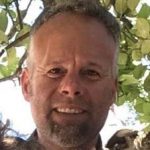
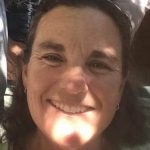


UPCOMING PREDICTWIND SEMINARS
UPCOMING PREDICTWIND SEMINARS
PredictWind began sponsoring the Panama Posse in 2021. As of Season 8 PredictWind is extending their sponsorship to the entire Ocean Posse and is offering four seminars over the next 6 months.
MARK YOUR CALENDARS FOR THE UPCOMING SEMINARS
The upcoming seminar dates are as follows:
- WEDNESDAY OCTOBER 23rd, 2024 @ 15:30 US PACIFIC TIME
- THURSDAY DECEMBER 5, 2024 @ 14:30 US PACIFIC TIME
- MONDAY FEB 2, 2025 @ 14:30 US PACIFIC TIME
- MONDAY MARCH 17 2025 @ 14:30 US PACIFC TIME
PredictWind supports the Ocean Posse with free tracking and a 20 % Discount off our pro packages – to claim your discount please login and email support@predictwind.com asking for your Ocean Posse discount. Please include your vessel name and email address. The discount will be credited back.
MUST SEE: 🇵🇫 Taputapuātea on Ra’iātea Island, French Polynesia
MUST SEE: 🇵🇫 Taputapuātea on Ra’iātea Island, French Polynesia
in 2017 UNESCO named Taputapuātea on Ra’iātea Island, French Polynesia a world heritage site for its outstanding universal value, exceptional testimony to 1,000 years of pre-colonial mā'ohi civilization, and central location in the 'Polynesian Triangle'. The 'points' on the Polynesian triangle are New Zealand, Hawaii, and Rapa Nui. Taputapuātea is in the very center of this triangle of oceanic islands. Both the cultural landscape and seascape on Ra’iātea make this a unique and remarkable place one must see. Taputapuātea is an area that goes from the mountains through forested valleys spanning across a portion of lagoon and coral reef and a strip of open ocean. In the center is the Marae of Taputapuātea.

The Marae of Taputapuātea is considered to be the most sacred pre-colonial Polynesian archeological sites in French Polynesia. UNESCO describes this site as:
"dedicated to the god ‘Oro and the place where the world of the living (Te Ao) intersects the world of the ancestors and gods (Te Po). It also expresses political power and relationships. The rise in the importance of Taputapuātea among the marae on Raiatea and in the wider region is linked to the line of Tamatoa ari’i (chiefs) and the expansion of their power. Taputapuātea was the centre of a political alliance that brought together two widespread regions encompassing most of Polynesia. The alliance was maintained by regular gatherings of chiefs, warriors and priests who came from the other islands to meet at Taputapuātea. The building of outrigger canoes and ocean navigation were key skills in maintaining this network.
A traditional landscape surrounds both sides of the Taputapuātea marae complex. The marae complex looks out to Te Ava Mo'a, a sacred pass in the reef that bounds the lagoon. Atāra motu is an islet in the reef and a habitat for seabirds. Ocean-going arrivals waited here before being led through the sacred pass and formally welcomed at Taputapuātea. On the landward side, ’Ōpo’a and Hotopu’u are forested valleys ringed by ridges and the sacred mountain of Tea’etapu. The upland portions of the valleys feature older marae, such as marae Vaeāra’i and marae Taumariari, agricultural terraces, archaeological traces of habitations and named features related to traditions of gods and ancestors. Vegetation in the valleys is a mix of species, some endemic to Raiatea, some common to other Polynesian islands and some imported food species brought by ancient Polynesians for cultivation. Together, the attributes of the property form an outstanding relict and associative cultural landscape and seascape."
Throughout Polynesia the Marae are communal or sacred sites in village life. In order to build a marae in another location, it is said that one must start with a stone from Taputapuātea. The marae are places with different functions. They are places where the world of the living intersected with the world of village ancestors and Polynesian gods. They are places where people gather for ceremony, dance, connecting with the past and with community.

This video is a product of the cumulative effort of cultural and historical groups presenting the significance of Taputapuātea in the past, the present, and for the future.
https://youtu.be/wXbJXHR8-3g?t=391





SAFEFTY AND SECURITY: REDUCING FIRE RISK
SAFEFTY AND SECURITY: REDUCING FIRE RISK WITH SMART PLUGS
Many members of the Ocean Posse are tied to a dock either presently, have been, or will be at some point along the way. If and when one decides to 'Plug In' it is important to know the risks and available safer options available today.
A significant risk when plugging one boat in to shore power is fire risk. The power to the pedestals along a dock may not be consistent. There may be surges, outages and or just regularly inconsistent flow of power. This variability can pose a risk within the pedestal and worse it can pose a risk aboard ones vessel at the connection.
Recently, Posse members aboard SV SERENITY shared their experience with this risk on the Posse Line Ap. It is a shout out to other member to be aware and check their power cords:
For those of you with 30 or 50 Amp power that get close to it’s limit on a continuous basis (e.g. running AC while cooking with electric). For the second time in two years, our standard cable and socket shorted. This time, the insulation in the socket between hot and neutral melted and the wires actually touched. It’s worth the investment to prevent a fire hazard.



The only place one can control is where and how the power comes aboard their boat is one their boat. Serenity has now installed a 'Smart Plug'. This is a branded receptacle and plug for the boat side of the 'Plug In' process. The Smart Plug is a huge help AND one still needs to check it for damage regularly as seen above!


SV SERENITY was lucky. They lost a cord and a plug, but did not sustain any damage to their boat. Years ago Posse Member, Rob Murray on SV AVANT, saw smoke billowing out of the stern of a neighboring vessel. The fire had started at the cord inlet. He acted fast and doused the fire before any help even arrived. Here he shows a concise visual on the steps he took to get the fire out fast:

SYSERENITY 🇺🇸 Mark & Kathryn – Antares 44′ & SY AVANT 🇨🇦 Rob & Debra – Beneteau 43.5
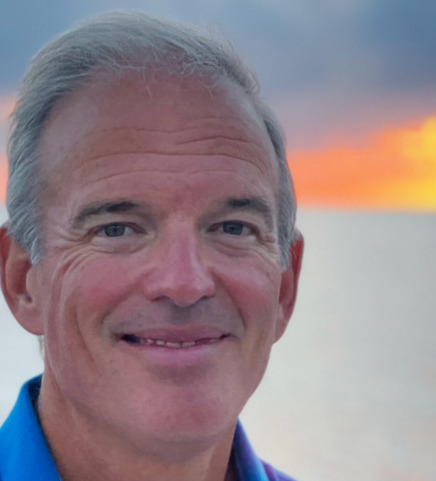

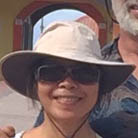
THANK YOU FOR SHARING MARK AND ROB!
FIJIAN CULTURE AND THE SEVUSEVU PROCESS
FIJI: THE SEVUSEVU PROCESS
In traditional villages in Fiji Sevusevu is and has been the central component of all life-cycle rituals, social gatherings, healing ceremonies and community meetings. Significant and ancient in Fiji, the “sevusevu” also marks the time and place for visitors to seek acceptance into a Fijian village.

Every Sevusevu is not as formal as pictured above however there is a distinct and courteous process visitors must follow. Further, understanding the significance of Sevusevu, respecting, and adhering to the tradition of this process helps to keep this aspect of Fijian Culture strong.
Longtime Ocean Posse member Chris on SV SEAGLUB has been living in Fiji for several years. He shares the following about his experience with the Sevesevu:
In Fiji, when visiting smaller settlements, a visitor must seek out the village chief and present him with a small token or gift as a sign of respect and to ask permission to visit. This not only gives visitors permission to interact with the villagers but also to stay in the town and to visit any local scenery (such as beaches, waterfalls etc). Not doing so shows disrespect for their culture, but is also the equivalent of trespassing – for example pitching a tent in someone's backyard without permission.
‘Sevusevu’ is the name given to the actual gift or token that visitors present the chief with, most commonly a half-kilo bumdle of waka (kava root). When arriving in the village, visitors should ask for the Turaga ni Koro (pronounced as too-ranga nee koro) or the village headman, as they usually have good English skills and will help with the translations. The headman will take visitors to the chief’s house for introduction. Remember no hats are to be worn once in the village and you should take your shoes off at the door before entering houses. Sitting cross legged on the floor, the kava root is then presented to the chief.
To ensure you are respectful of this important tradition, there are a few points of etiquette to follow. Firstly, everyone at the ceremony should dress in a sulu, which is a Fijian skirt regarded as their national dress. Women should also cover their shoulders. Men should sit cross-legged, ensuring that their sulu covers their knees, and women should sit with knees and feet together. Do not take photographs or videos throughout the ceremony, until the Turaga ni Koro lets you know that it’s okay to do so. Silence during the ceremony itself is crucial.
The ceremony itself is poignant. Afterwards you'll be welcomed as nothing less than family.
SV SEAGLUB 🇺🇸 Chris -Hylas 46'

PASSAGE REPORT TO PANAMA FROM COLUMBIA
PASSAGE REPORT TO PANAMA FROM COLUMBIA:
with Check-In Procedure at El Porvenir

Recently, SV ATARAXIA sailed from northern Columbia to Panama. They wanted to visit a very unique and special part of Panama: the Guna Yala Archipelago, also known as the San Blas Islands before. The Archipelago is in northeastern Panamanian waters and is home to the Guna (or Kuna) Yala people, the largest Panamanian indigenous group. The archipelago is known for being a jewel of Panama with palm covered islands amid clear turquoise water.
SV ATARAXIA wanted to visit this archipelago upon entering Panamanian waters pushing on to the more formal and bustling city of Colon on Panama's mainland, at the northern end of the Panama Canal. Below Skipper Ludwig shares from his passage notes their experience entering Panama through El Porvenir:
Well, we were right : you should have come. Guna Yala is really beautiful.
We left Cartagena de Indias, Colombia 2 days ago and last night was a pretty calm night. We sailed under main alone and we still were making good enough speed that we had to turn a circle at sea before entering El Porvenir, allowing us to come in during daylight.
We anchored and went ashore to ask where immigration was. El Porvenir is in fact just 1 airstrip for small planes and that explains why there is immigration. But first you need to visit the Comarca Guna Yala congresso office to pay to the indigenous people that own these islands for a ‘cruising permit’, something like an entry fee for paradise. Then it is on to the immigration office. Given there are only 2 buildings or rather structures, it wasn’t all that difficult to find even if you hadn’t slept much the previous night.
When it was finally our turn to be cleared in, all we needed was some extra photocopies (conveniently available at the congresso for 50 cts) and we got our immigration stamps. What about customs? “Go and do that in Colon” we were told. OK, nothing can be perfect not even in paradise.
Noonsite says that you can clear immigration in El Porvenir, and indeed they do. They stamp both your passport and your exit zarpe from Colombia. It looks like a stamp is the only thing they have, so they do not produce any paper, they just....stamp. We had our agent, Erick Galvez request a cruising permit for us beforehand. In fact, we set that in motion a month before arriving in Panama. It still wasn't ready when we got to El Porvenir, an unusual slow process that has since (we were there early June 2024) been sped up. Either way, we were assured by every instance be it official or non-official that our immigration stamps were really the critical ones and we had those! We received our cruising permit while we were back in the USA and our boat on the hard. While this sounds 'different' from other places, to the Panamanians it seemed pretty obvious. And every single official was friendly, ...and so were we.
While we were anchoring at first light, 2 canoes with Guna women were paddling towards us. We had some trouble finding the right spot to anchor and so these ladies had their rowing workout cut out for them, chasing ATARAXIA.
It is not my preferred thing to do, bartering over molas or other stuff after being awake for half a night, but it was clear these ladies were not going to give up, so we have some very nice molas already to fly home with us.

Then we moved the boat to Lemon Cays, one of these smaller archipelagoes where all the islands end in ‘dup’ (Bandup, Nuriandup or some other tongue twister). Upon arrival we were greeted by a canoe with 3 fishermen who held up a lobster in the international language of trade. We signaled to hold off a bit so that we could anchor but once that was out of the way, we bought 4 lobster for 5USD per piece. We didn’t even try to get a lower price. With that, you know what Louis, our crew-chef is working on right now.

Time for the restless to go and explore the underwater world and they came back with all the wonderful things they saw including a shark (a real one, not a nurse shark). While they were doing that, I stayed back to defend the fort, hey someone got to do it, and sure enough we were invaded by a clever bird that flew into the cabin, picked open the plastic packaging of a baguette and decided those baguettes are really good. I agreed and therefore I chased him away. We want to eat that baguette (at least the other part of it).
We intend to stay 2 nights here in this anchorage as there is a lot more to explore.

SV ATARAXIA Ludwig – Etap Yachting 46’











